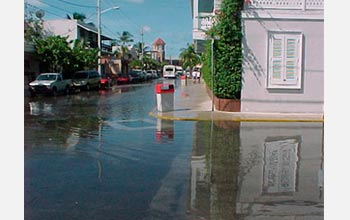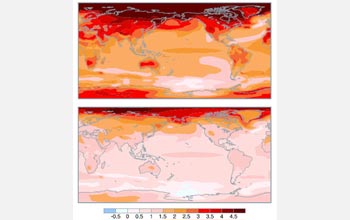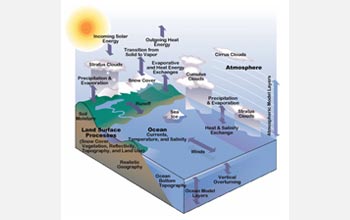All Images
News Release 09-068
Decline in Greenhouse Gas Emissions Would Reduce Sea-Level Rise, Save Arctic Sea Ice
This material is available primarily for archival purposes. Telephone numbers or other contact information may be out of date; please see current contact information at media contacts.

Population centers at low elevations like Florida's Key West are vulnerable to sea-level rise.
Credit: NOAA
Download the high-resolution JPG version of the image. (57 KB)
Use your mouse to right-click (Mac users may need to Ctrl-click) the link above and choose the option that will save the file or target to your computer.

New computer simulations show the extent that average air temperatures at Earth's surface could warm by 2080-2099 compared to 1980-1999, if (top) greenhouse gases emissions continue to climb at current rates, or if (bottom) society cuts emissions by 70 percent. In the latter case, temperatures rise by less than 2 C (3.6 F) across nearly all of Earth's populated areas. However, unchecked emissions could lead to warming of 3 C (5.4 F) or more across parts of Europe, Asia, North America and Australia.
Credit: NCAR
Download the high-resolution JPG version of the image. (104 KB)
Use your mouse to right-click (Mac users may need to Ctrl-click) the link above and choose the option that will save the file or target to your computer.

This graphic illustrates the many components included in the CCSM, ranging from cirrus and stratus clouds to ocean currents and soil moisture.
Credit: Paul Grabhorn, UCAR
Download the high-resolution JPG version of the image. (116 KB)
Use your mouse to right-click (Mac users may need to Ctrl-click) the link above and choose the option that will save the file or target to your computer.


